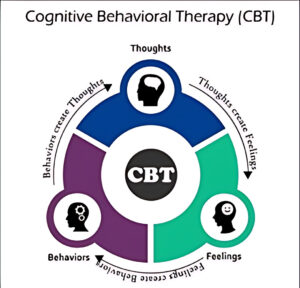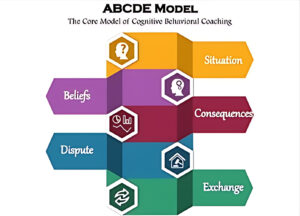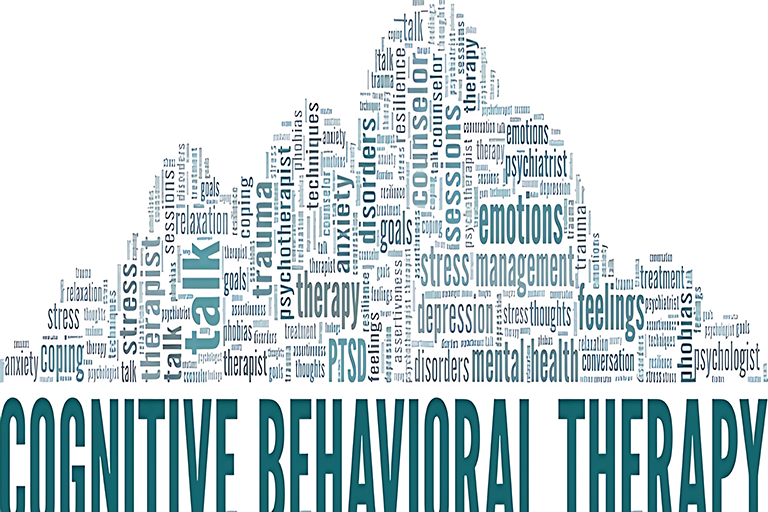Cognitive Behavioral Therapy Exercises for Emotional Well-being
In the quest for emotional well-being, few tools are as effective as Cognitive Behavioral Therapy (CBT). CBT isn’t just a therapeutic approach confined to the therapist’s office; it’s a practical set of techniques and exercises that can empower you to manage your emotions and improve your mental health in your daily life. Let’s explore some of these exercises and how they can contribute to your emotional well-being.
Understanding CBT
Before diving into the exercises, let’s grasp the essence of CBT.
At its core, CBT is a psychological approach that seeks to identify and modify unhelpful thought patterns and behaviors. It operates on the belief that our thoughts influence our emotions and behaviors, and by changing our thought patterns, we can better manage our emotions and responses.
CBT exercises provide structured ways to challenge and reframe these thoughts, fostering a more positive and balanced outlook on life. Here are some powerful CBT exercises that you can integrate into your daily routine.

-
Identifying Negative Thought Patterns:
Begin by recognizing your negative thought patterns. Pay attention to moments when you feel stressed, anxious, or upset. Try to pinpoint the thoughts that trigger these emotions. For example, if you’re feeling anxious about an upcoming presentation, you might identify thoughts like, “I’ll mess up,” or “Everyone will judge me.”
-
The ABCDE Model:
Once you’ve identified negative thoughts, use the ABCDE model to analyze them:

– A (Activating Event): What triggered the negative thought? In our example, it’s the upcoming presentation.
– B (Belief): What is the belief associated with this event? “I’ll mess up.”
– C (Consequence): What are the emotional and behavioral consequences? Anxiety and avoidance.
– D (Disputation): Challenge the belief. Ask yourself if there’s evidence to support it. Are there past successes you can draw on? What’s the worst that could happen, and how likely is it?
– E (New Effect): After disputing the belief, assess how your emotions and behaviors change. You might feel less anxious and more willing to prepare for the presentation.
-
Journaling and Thought Records:
Keep a thought journal where you record your negative thoughts and emotions. Write down the situation, your emotions, and the automatic thoughts that arise. Then, work on thought records by challenging and reframing these thoughts. Replace them with more balanced and constructive alternatives.
-
Gratitude Journaling:
Practicing gratitude is a powerful exercise to enhance emotional well-being. Each day, jot down three things you’re grateful for. It can be as simple as a sunny day or a kind gesture from a friend. Over time, this fosters a positive outlook and reduces negative thinking patterns.
-
Progressive Muscle Relaxation (PMR):
PMR is a relaxation technique that helps reduce stress and anxiety. Start by tensing and then relaxing each muscle group in your body, starting from your toes and working your way up to your head. As you release tension, you’ll feel more physically relaxed, which can have a positive impact on your emotional state.
-
Mindfulness Meditation:
Mindfulness exercises encourage you to stay present and non-judgmentally observe your thoughts and emotions. Focus on your breath, sensations in your body, or the sounds around you. When negative thoughts arise, acknowledge them without judgment and gently guide your attention back to the present moment.
-
Behavioral Experiments:
If you have a specific fear or negative belief, conduct small behavioral experiments to test its validity. For example, if you fear public speaking, start by practicing in front of a mirror or a trusted friend. Gradually increase the challenge to build confidence and challenge irrational beliefs.
-
Cognitive Restructuring:
Cognitive restructuring involves identifying cognitive distortions, such as all-or-nothing thinking, catastrophizing, or personalization, and replacing them with more rational and balanced thoughts. This helps reduce emotional distress and fosters a healthier perspective.
-
Self-Compassion Exercises:
Many people are their harshest critics. Practicing self-compassion involves treating yourself with the same kindness and understanding you would offer to a friend. Write down self-compassionate statements or use guided meditations that emphasize self-kindness.
-
Behavioral Activation:
When you’re feeling down or depressed, engaging in pleasurable activities can help improve your mood. Create a list of enjoyable activities and commit to doing one each day, even when you don’t feel like it. This can break the cycle of inactivity and boost your emotional well-being.
-
Communication Skills Training:
Effective communication is vital for healthy relationships and emotional well-being. CBT can help you develop assertiveness, active listening, and conflict resolution skills, allowing you to express your feelings and needs more effectively.
-
Self-Monitoring and Goal Setting:
Set specific, achievable goals related to your emotional well-being. Track your progress and adjust your goals as needed. This exercise provides a sense of purpose and accomplishment, contributing to your overall emotional health.
-
Thought Challenging:
Challenge and reframe automatic negative thoughts by asking yourself questions like, “Is this thought based on facts or assumptions?” or “What’s the worst-case scenario, and how likely is it to happen?” This helps you gain perspective and reduce emotional distress.
CBT exercises are tools to help you cultivate emotional well-being.
Consistent practice and patience are key. It’s also perfectly acceptable to seek guidance from a mental health professional who specializes in CBT to tailor exercises to your specific needs and ensure you’re on the right track to emotional well-being!
Learn more: Mental Health Awareness
& How is climate change affecting our mood and thus our mental health?
Bijoylaxmi Das, Mental Health Blogger, Your Confidant





